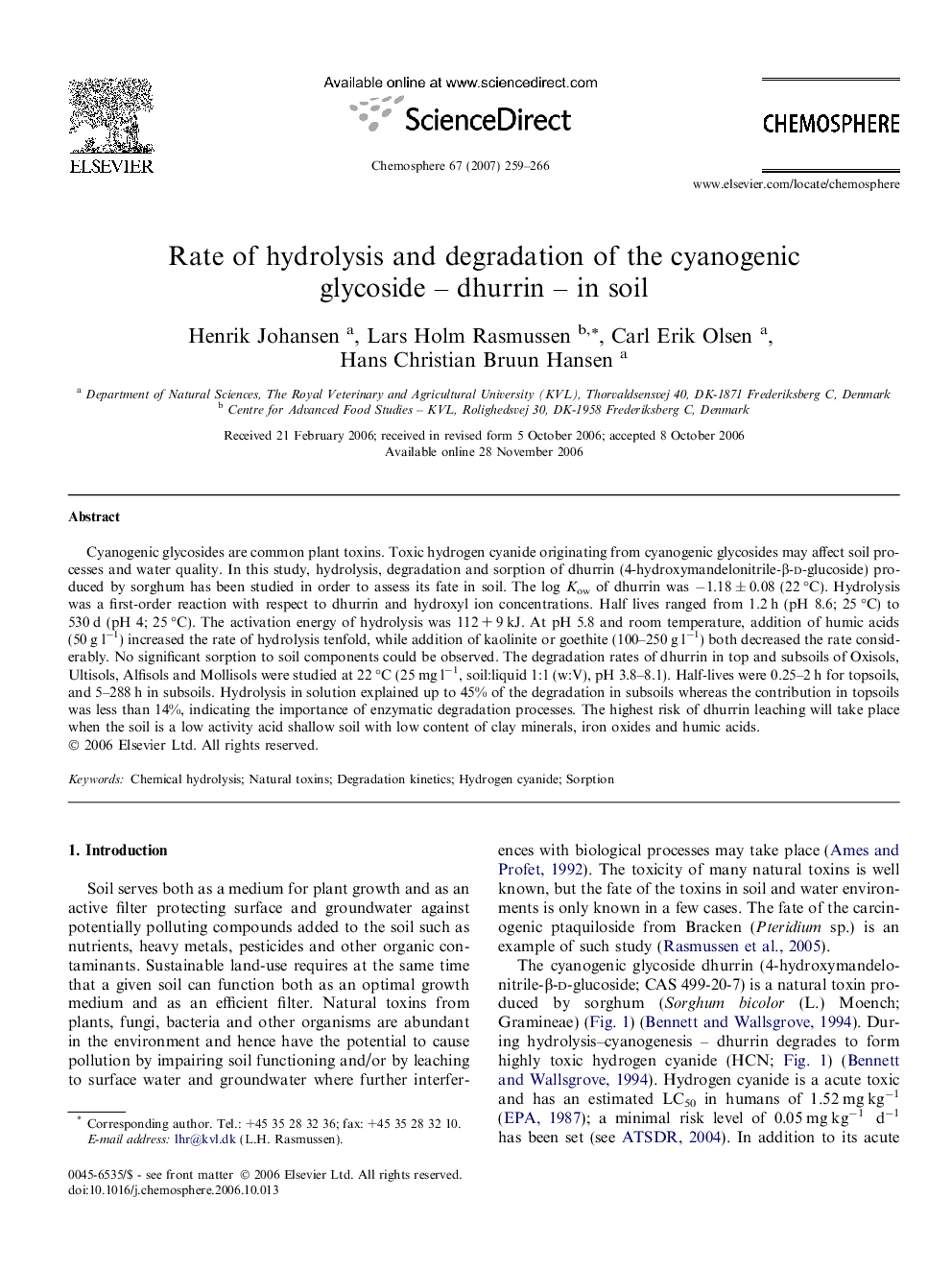| Article ID | Journal | Published Year | Pages | File Type |
|---|---|---|---|---|
| 4415618 | Chemosphere | 2007 | 8 Pages |
Cyanogenic glycosides are common plant toxins. Toxic hydrogen cyanide originating from cyanogenic glycosides may affect soil processes and water quality. In this study, hydrolysis, degradation and sorption of dhurrin (4-hydroxymandelonitrile-β-d-glucoside) produced by sorghum has been studied in order to assess its fate in soil. The log Kow of dhurrin was −1.18 ± 0.08 (22 °C). Hydrolysis was a first-order reaction with respect to dhurrin and hydroxyl ion concentrations. Half lives ranged from 1.2 h (pH 8.6; 25 °C) to 530 d (pH 4; 25 °C). The activation energy of hydrolysis was 112 + 9 kJ. At pH 5.8 and room temperature, addition of humic acids (50 g l−1) increased the rate of hydrolysis tenfold, while addition of kaolinite or goethite (100–250 g l−1) both decreased the rate considerably. No significant sorption to soil components could be observed. The degradation rates of dhurrin in top and subsoils of Oxisols, Ultisols, Alfisols and Mollisols were studied at 22 °C (25 mg l−1, soil:liquid 1:1 (w:V), pH 3.8–8.1). Half-lives were 0.25–2 h for topsoils, and 5–288 h in subsoils. Hydrolysis in solution explained up to 45% of the degradation in subsoils whereas the contribution in topsoils was less than 14%, indicating the importance of enzymatic degradation processes. The highest risk of dhurrin leaching will take place when the soil is a low activity acid shallow soil with low content of clay minerals, iron oxides and humic acids.
